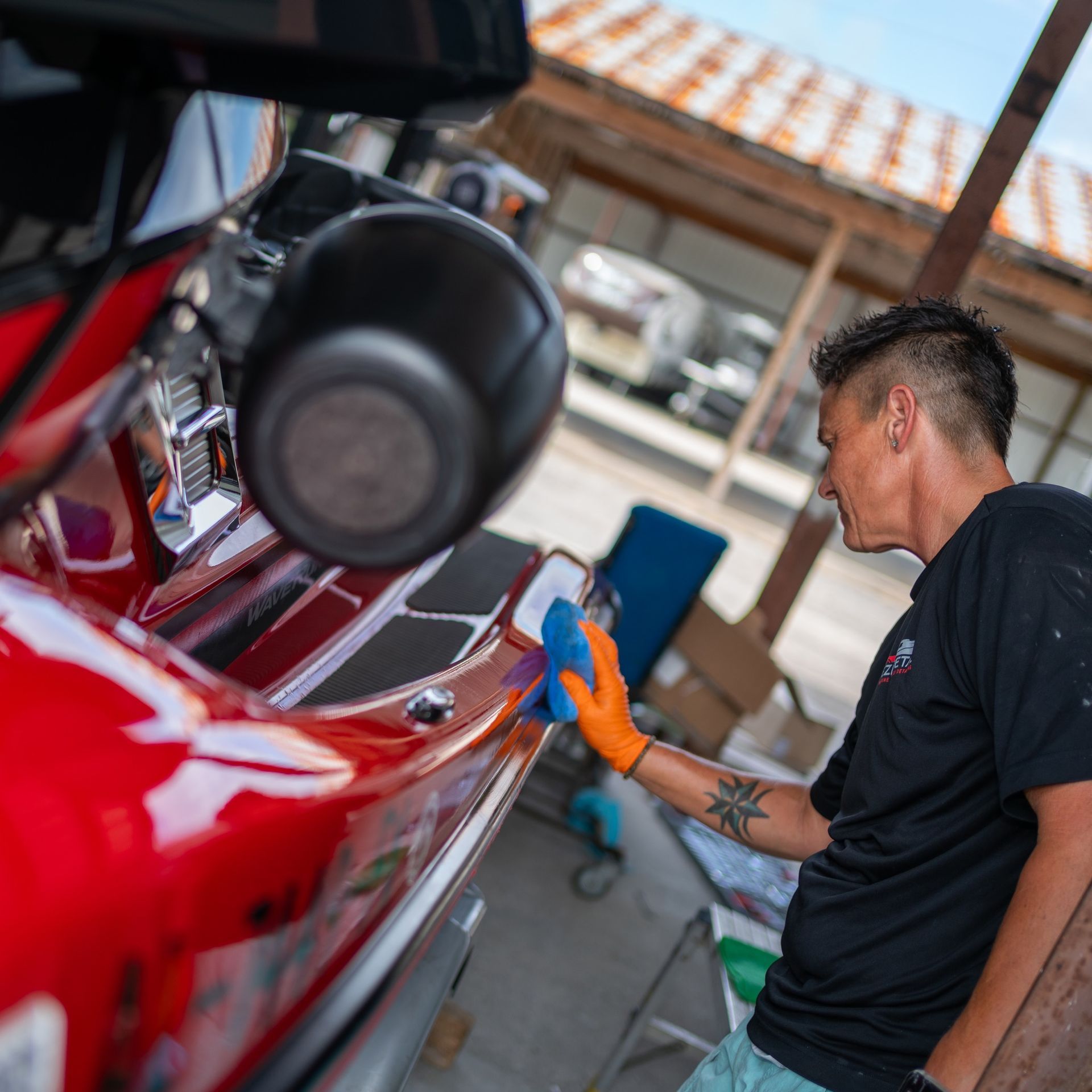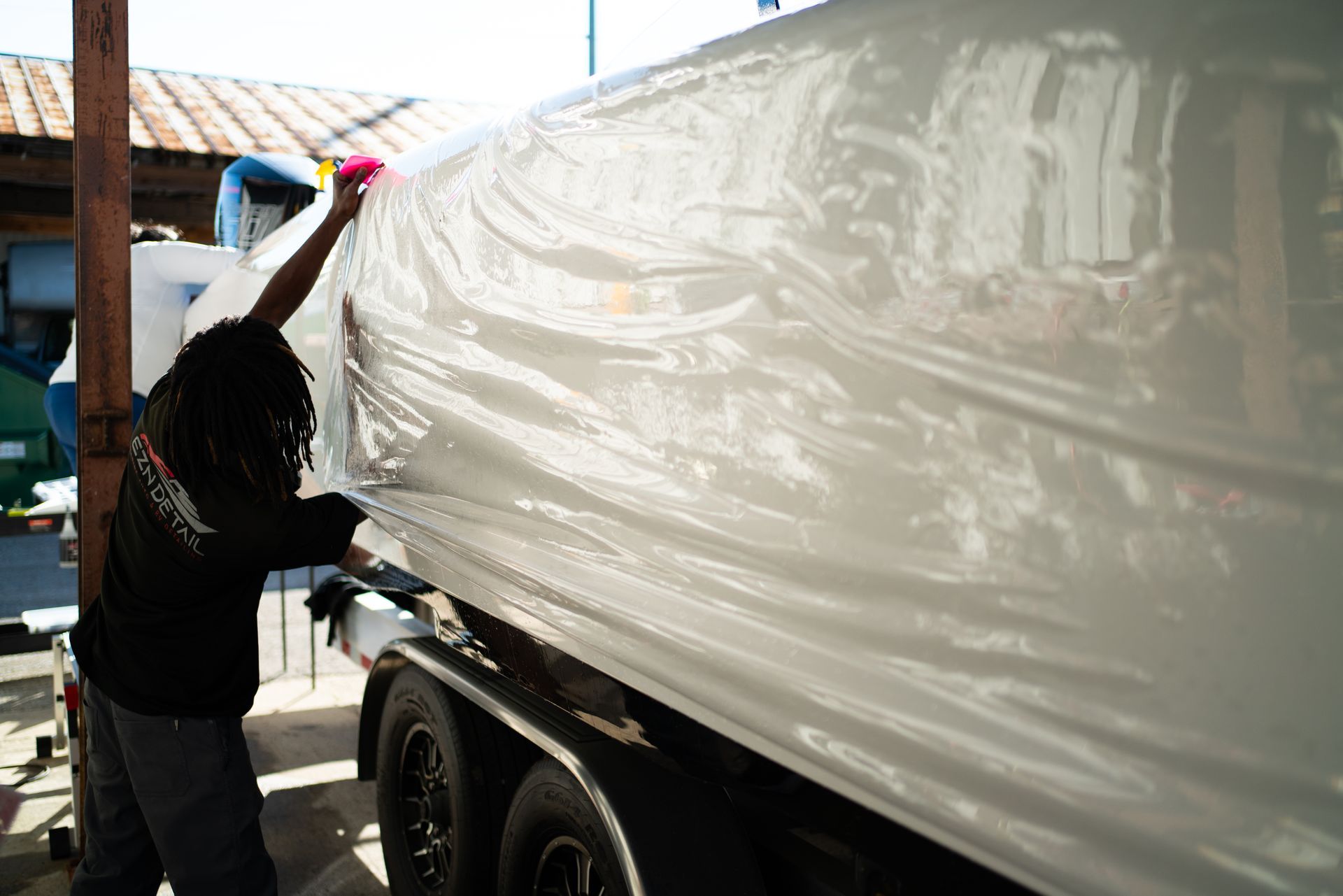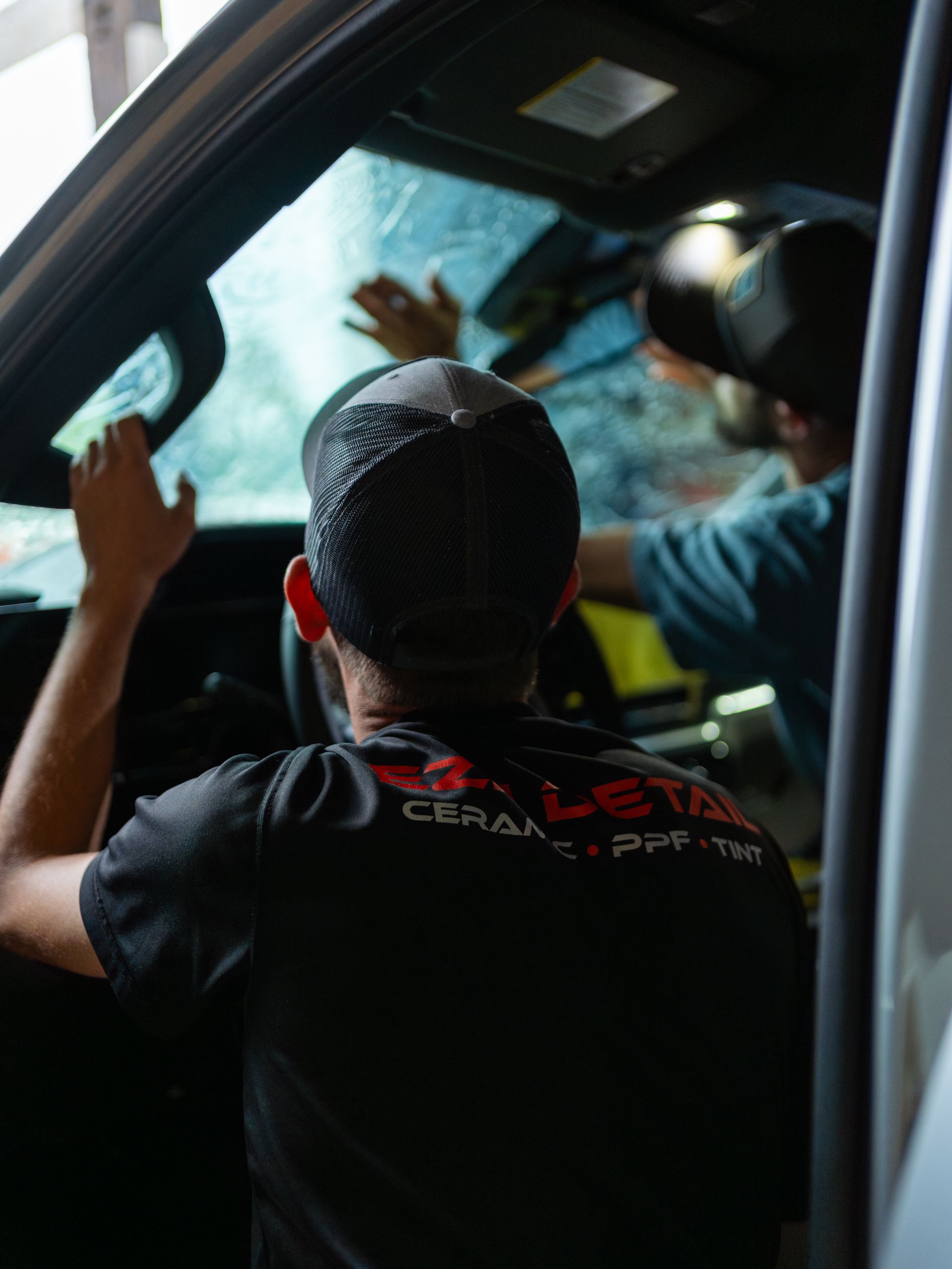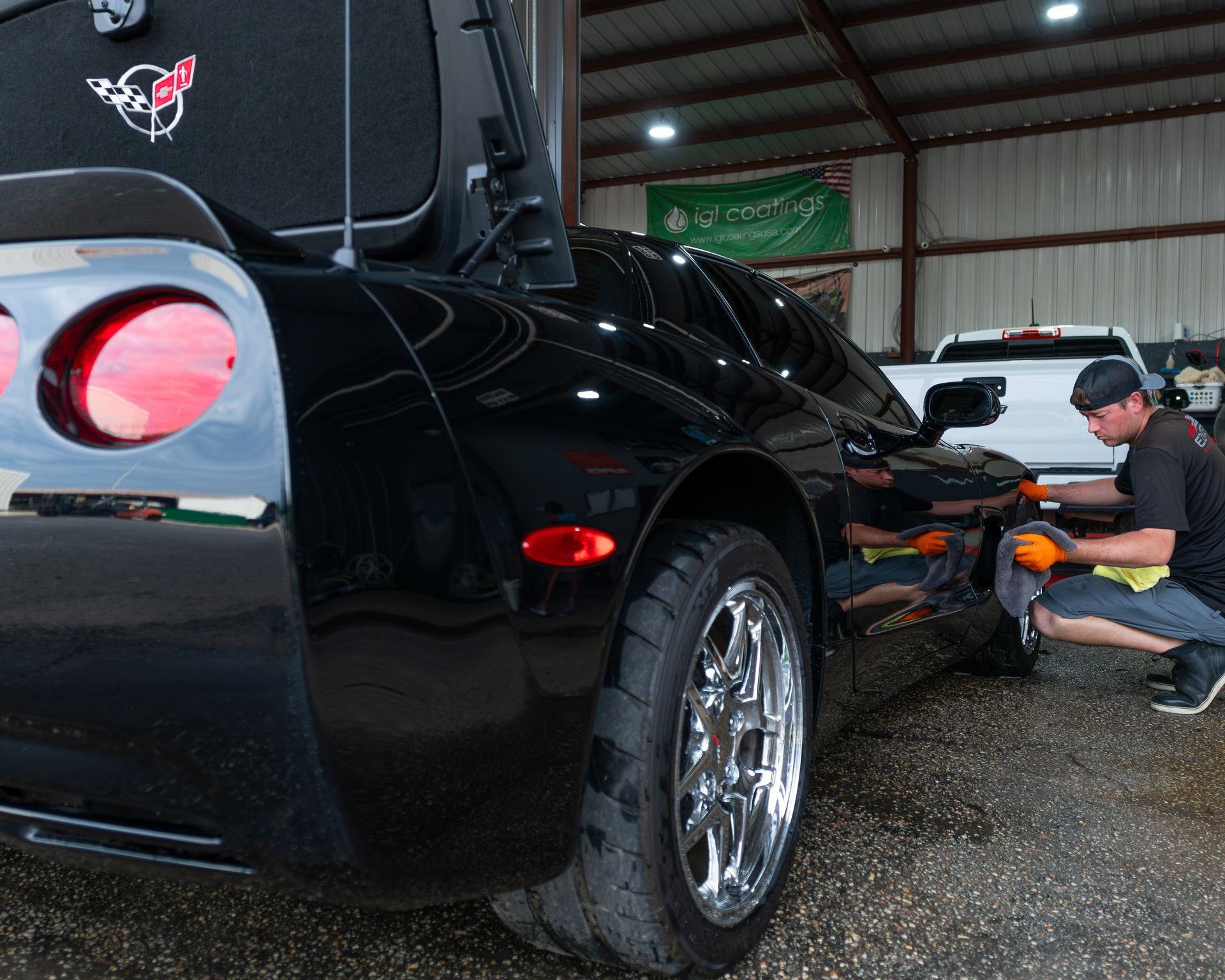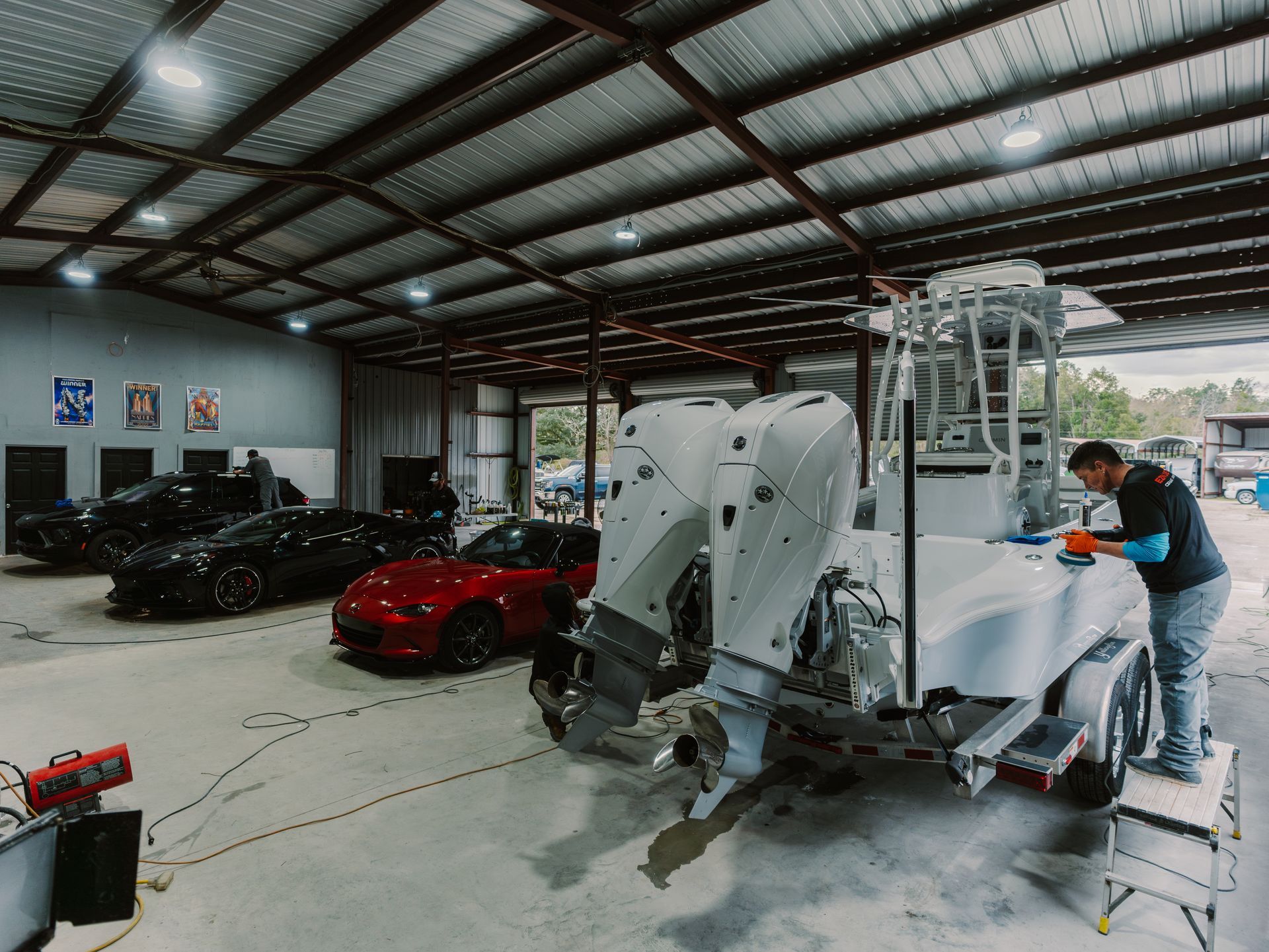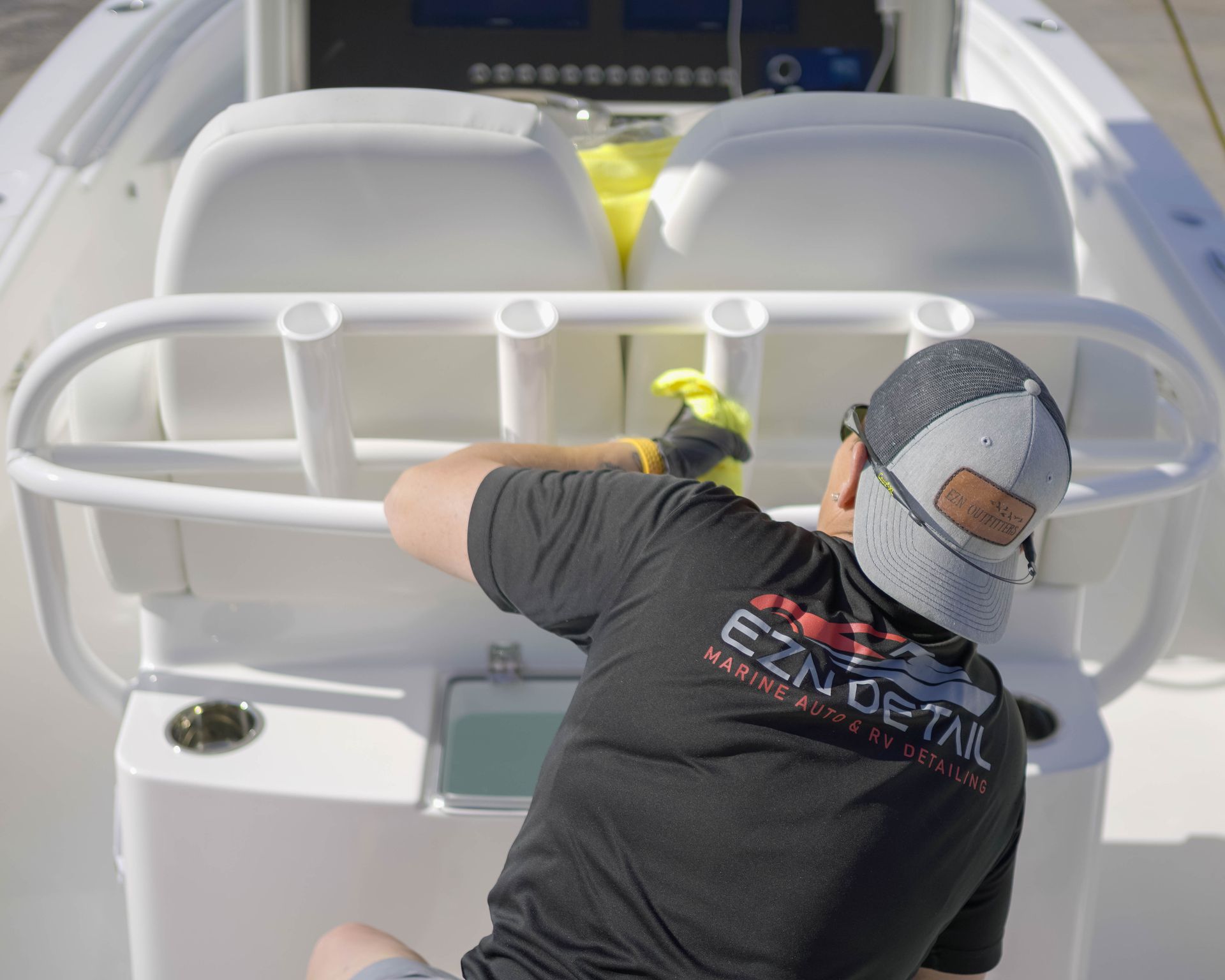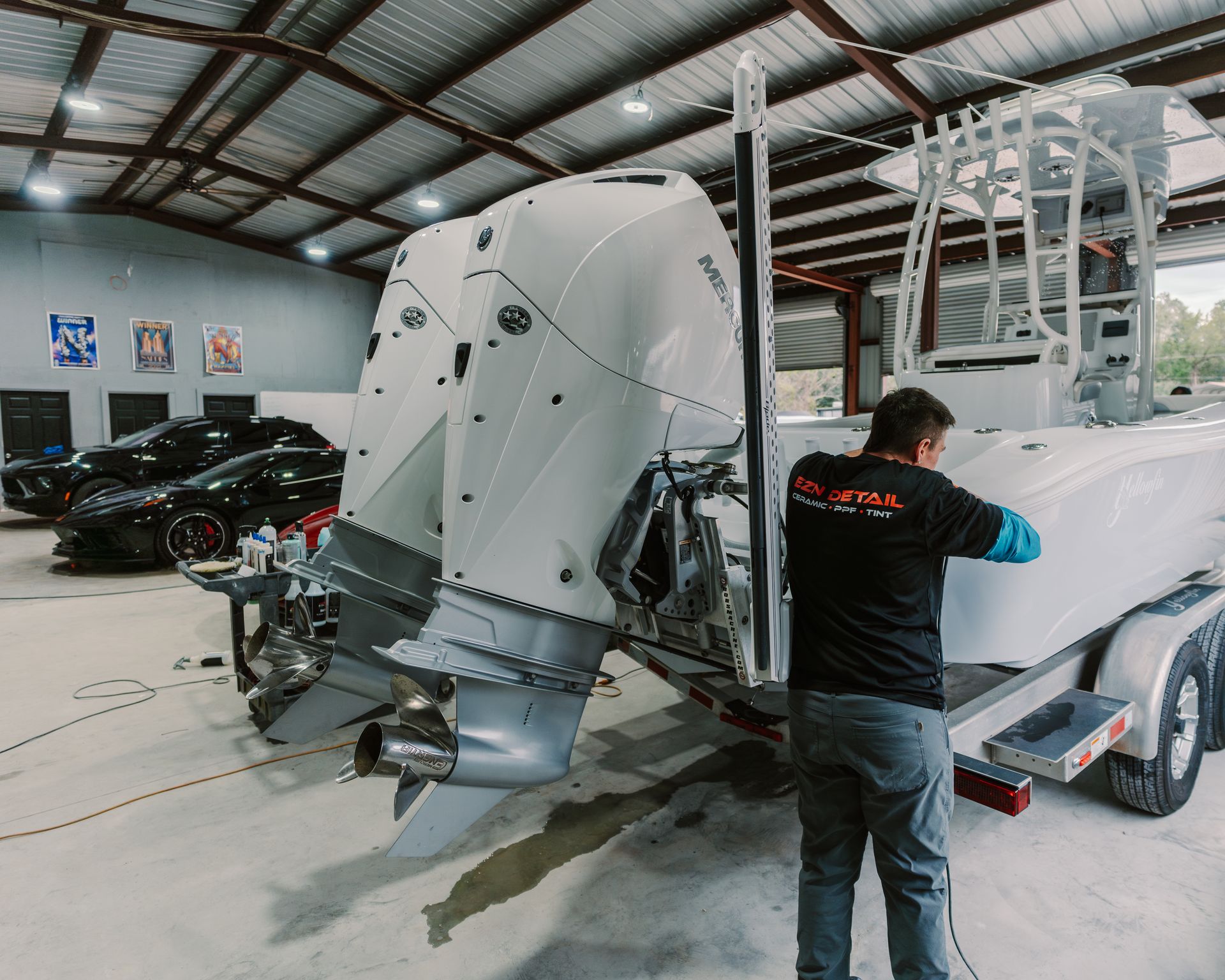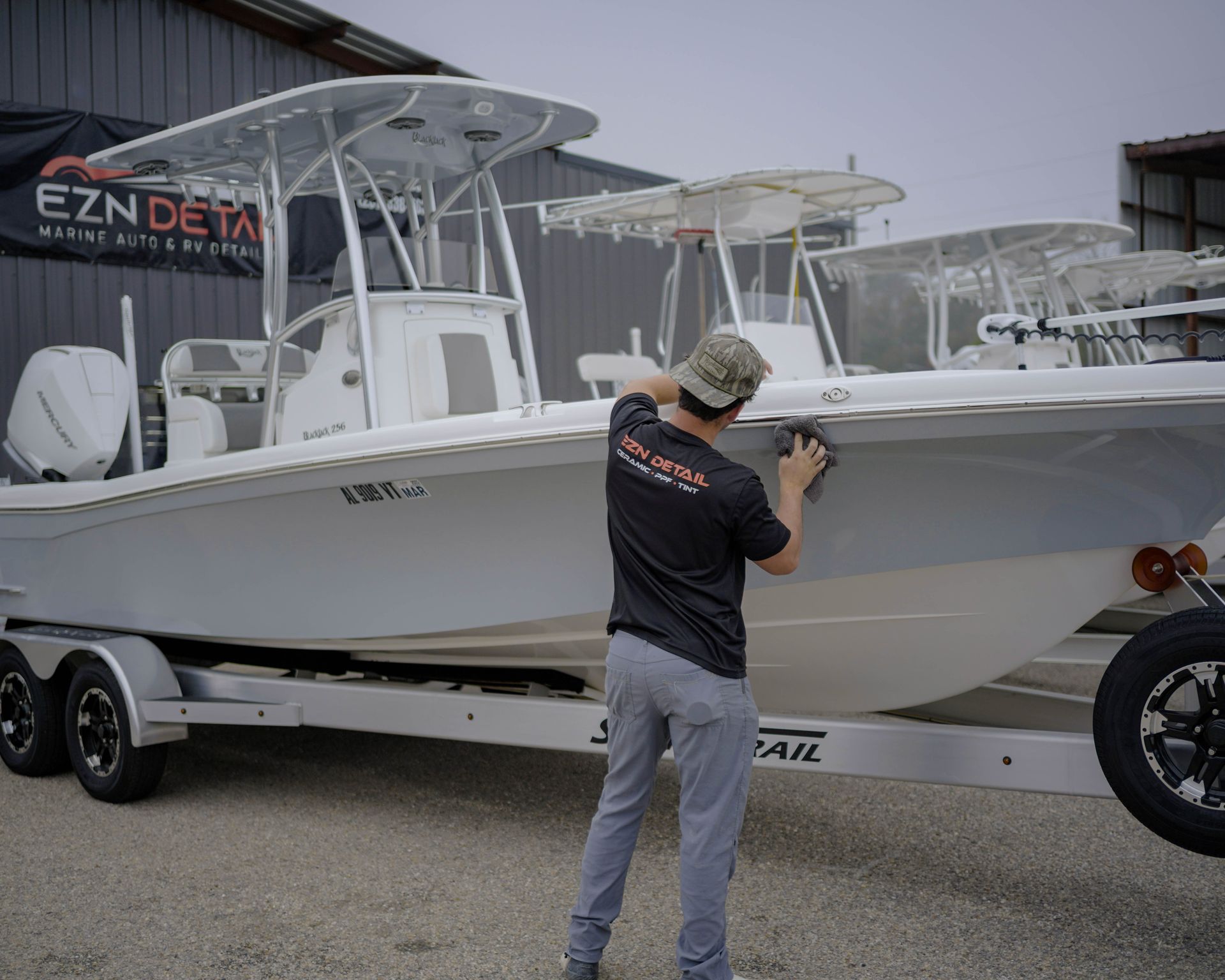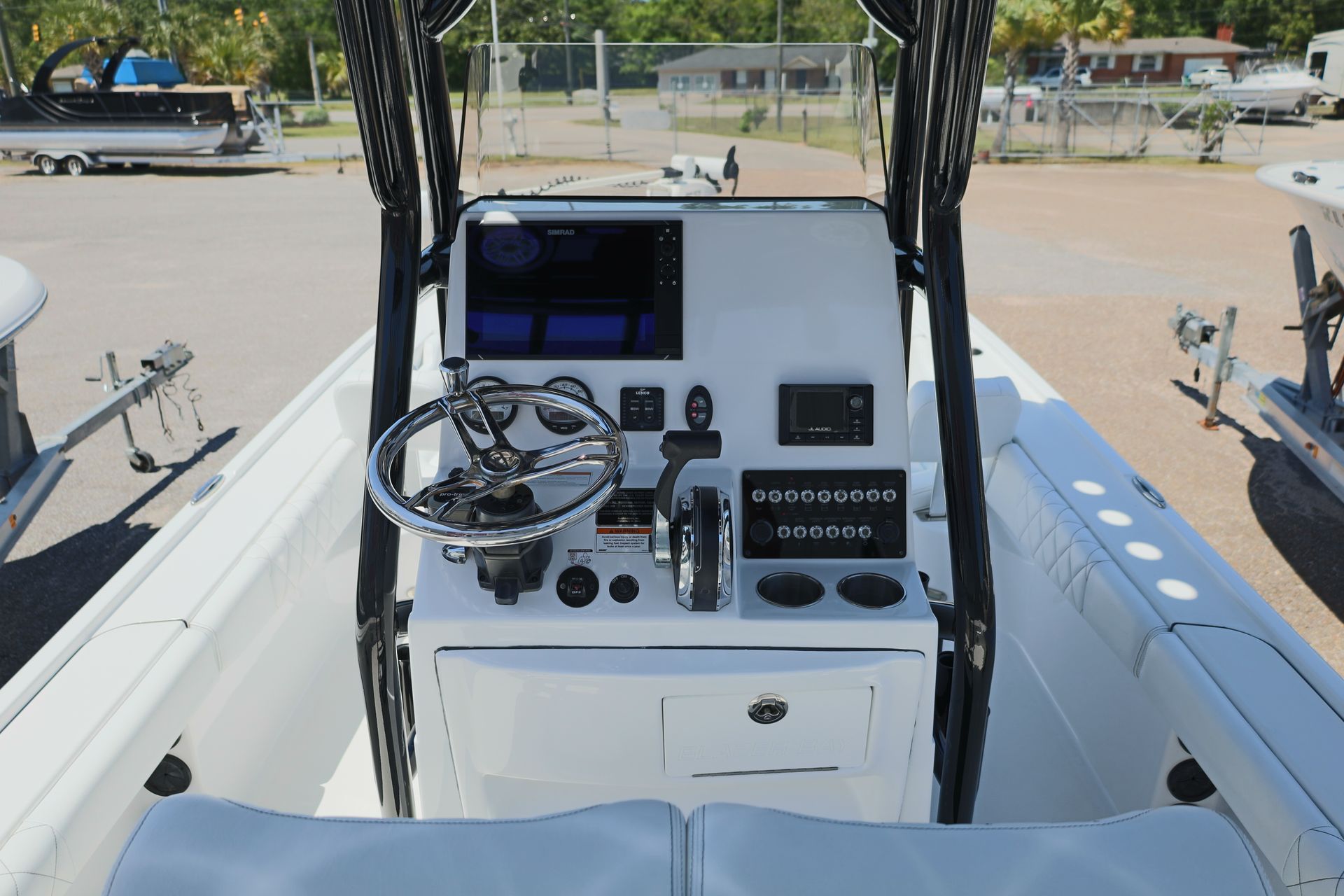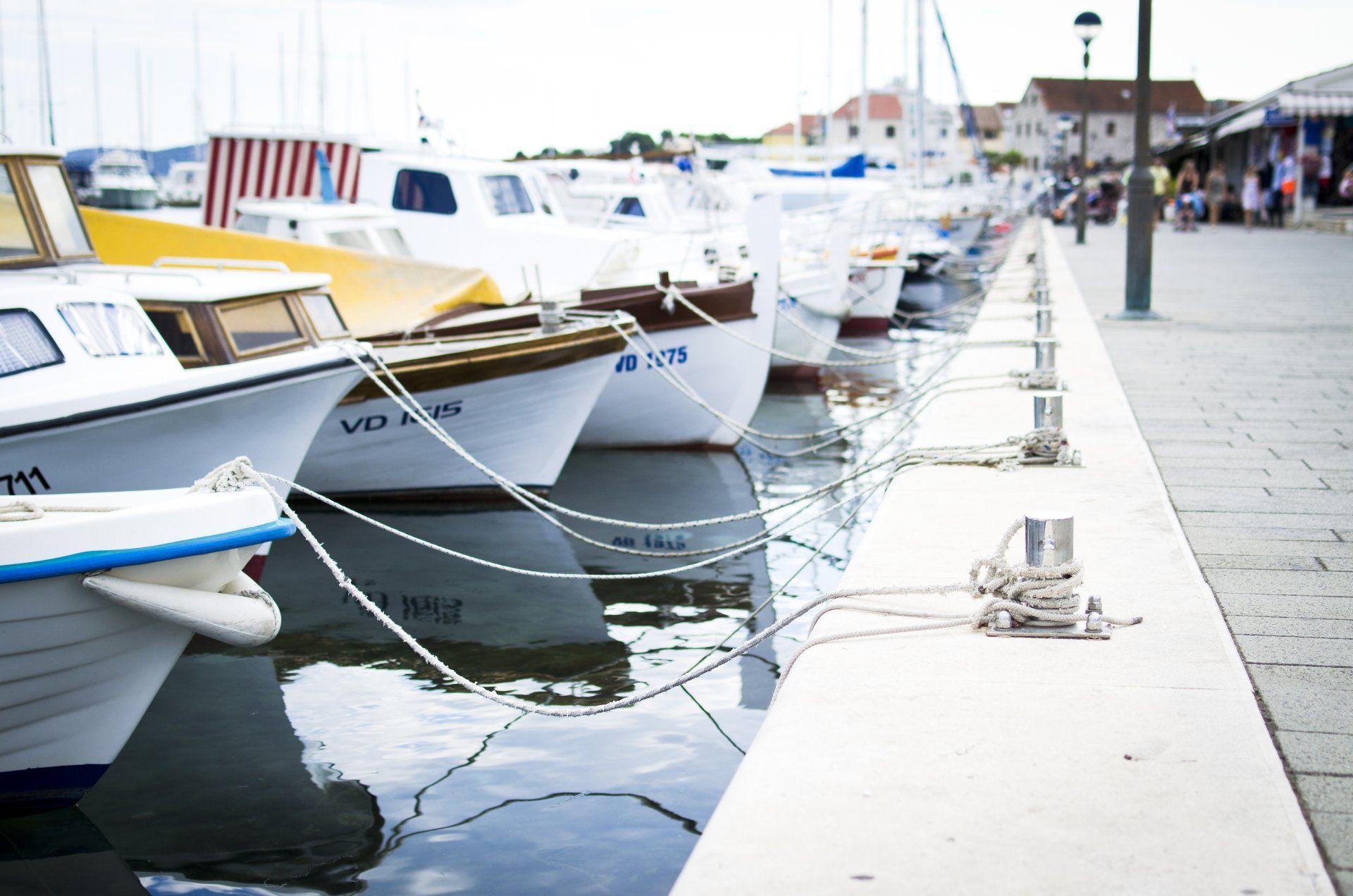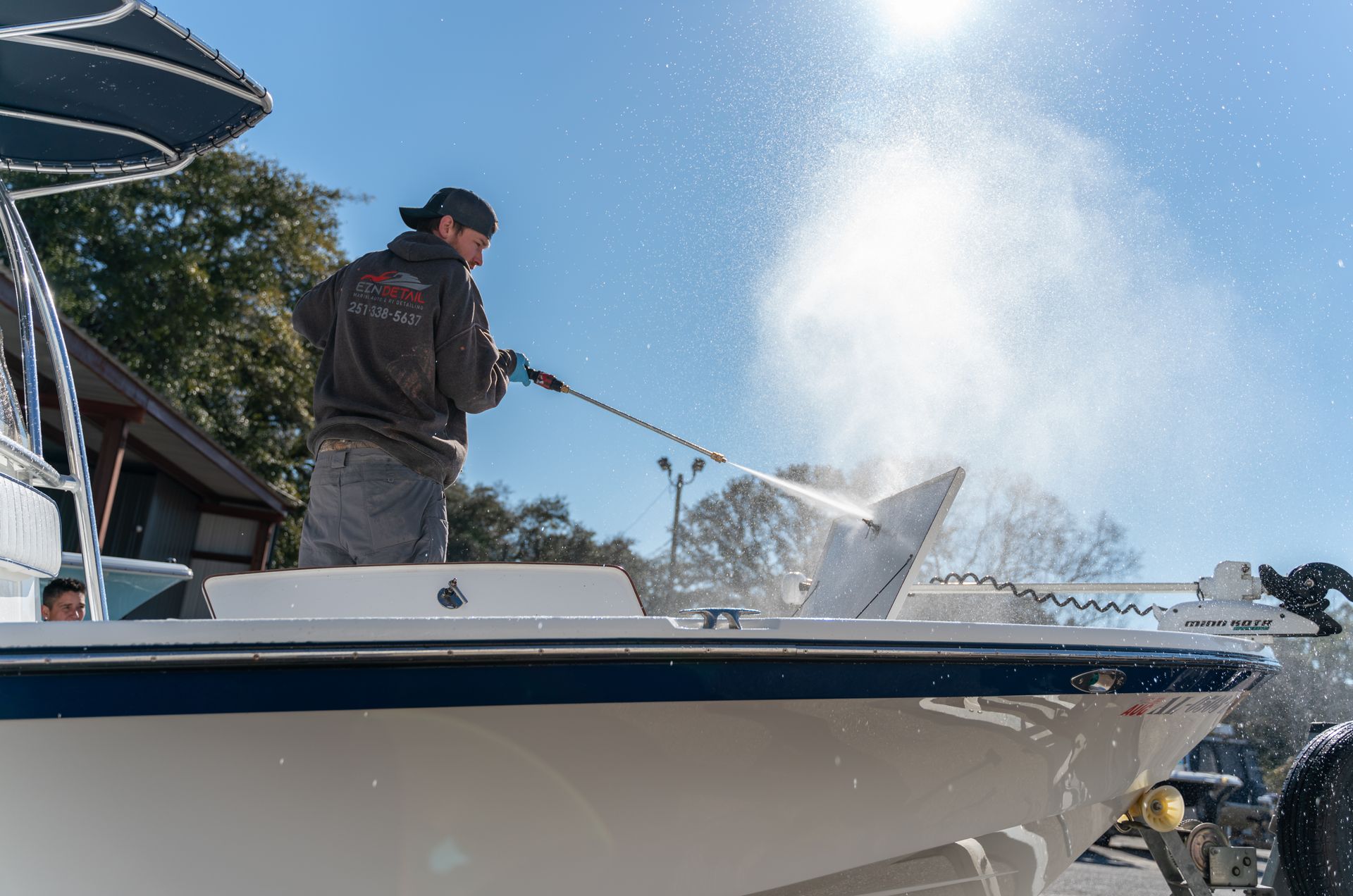Does Ceramic Coating Prevent Barnacles? Debunking the Myths and Reality
GET INSTANT PRICE (251) 338-5637Protecting your boat from barnacles and other marine critters is a top priority for many boat owners, especially those in coastal areas like Mobile, Alabama. While
ceramic coatings are often touted as a miracle solution, many boat owners invest time and money into these high-tech coatings, hoping for a maintenance-free experience on the water. But does the reality live up to the hype? Let’s dive into the science behind ceramic coatings and what they can—and cannot—do to protect your vessel in the ongoing battle against marine organisms.
Does Ceramic Coating Prevent Barnacles?
A common question many boat owners ask is: Can ceramic coatings prevent barnacles? While it's true that ceramic coatings create a smooth, durable finish on your boat’s surface, they don't provide an impenetrable barrier against marine organisms like barnacles. Think of ceramic coatings as a protective investment that enhances your boat’s appearance and makes cleaning easier, rather than a complete solution to prevent barnacle growth.
Research shows that high-quality ceramic coatings, such as 9H ceramics, do offer some benefits by reducing the adhesion of barnacles and other marine organisms to your boat’s hull. They effectively reduce adhesion rates, meaning barnacles might still latch onto the surface, but their grip will be weaker. In fact, boats treated with ceramic coatings show up to 50% less barnacle adhesion compared to untreated surfaces. However, this doesn’t mean you're completely free from barnacle growth.
Despite the protective benefits, ceramic coatings cannot fully eliminate the risk of barnacle attachment. Still, they make the cleaning process significantly easier. For example, barnacles that manage to adhere to a ceramic-coated surface are generally easier to remove compared to uncoated surfaces or those coated with standard finishes. This ease of cleaning becomes an essential factor when maintaining your boat, allowing you to spend less time scrubbing stubborn growths off the hull.
Ultimately, it's crucial for boat owners to understand that ceramic coatings aren’t a one-stop solution. To effectively prevent barnacle build-up, it’s important to establish a comprehensive maintenance routine. Regular cleaning, combined with antifouling paints—which can reduce barnacle growth rates by up to 70-90%—will provide a more complete protective approach.
Applying Ceramic Coating on Boats
The application process for ceramic coatings is critical in achieving a flawless, long-lasting protective finish. Here’s a step-by-step guide on how to apply ceramic coatings to your boat:
Step 1: Clean and Prepare the Surface
Before applying the ceramic coating, it’s essential to prepare the boat's surface. Start by giving the boat a thorough wash with a pressure washer to remove loose dirt, grime, and residues. This step is important to ensure the coating adheres properly.
Next, use a marine-grade hull cleaner specifically designed for boats. This ensures that any contaminants, including algae and oils, are effectively removed. For older vessels with porous gelcoats, you might need to sand the surface gently with fine sandpaper to smooth out imperfections that could interfere with adhesion.
Think of this stage as clearing out weeds before planting flowers—taking the time to prep properly will save you from headaches later.
Step 2: Apply the Ceramic Coating
Once the surface is clean and prepped, it’s time to apply the ceramic coating. Work in small sections to avoid the coating hardening before you’ve had a chance to spread it. Using an applicator pad, apply a thin layer of the coating evenly across each section. Avoid applying thick layers, as they can cause runs or uneven coverage.
For optimal results, always apply the coating in a shaded area or during cooler times of the day. This prevents premature drying and ensures a uniform finish. Patience during this step is key to achieving the best results.
Step 3: Allow for Curing and Maintenance
The curing process is where the ceramic coating “sets” and bonds with the surface. Depending on the product used, full curing can take up to 48 hours. During this time, avoid exposing the coated surface to any water. This step is crucial for ensuring the durability of the coating.
Once the coating has fully cured, maintaining the ceramic-coated surface becomes easier. Regular washes with pH-neutral soap will help retain its efficacy, preventing unwanted build-up of dirt or marine growth. Even though the coating makes cleaning easier, regular maintenance is still required to ensure long-term protection.
How Barnacles Adhere to Hulls
Barnacles are fascinating little creatures. These small marine crustaceans use a remarkable substance known as barnacle cement, which is composed primarily of proteins. This adhesive is engineered for rapid curing, allowing barnacles to form an incredibly strong bond with any surface, whether rough or smooth.
Interestingly, even shiny, hydrophobic surfaces like those coated with ceramic coatings can’t fully prevent barnacle larvae from attaching once they’ve found a suitable spot. This is why relying solely on ceramic coatings won’t guarantee barnacle-free boats, but they can make the removal process significantly easier.
The Chemistry Behind Barnacle Adhesion
When barnacles are ready to adhere to a surface, they release this protein-rich adhesive, which quickly hardens upon contact with water. Research shows that this barnacle cement has a tensile strength comparable to industrial-grade epoxy adhesives. This means barnacles attach with a force that makes them difficult to remove without potentially damaging the surface of the hull.
Barnacle adhesion can reach impressive forces of up to 100 kPa (kilopascals), which highlights the strength of their attachment. This is one of the reasons why it’s so challenging to prevent barnacles from sticking to your boat's hull.
Environmental Influences
External factors such as water temperature, salinity, and the type of water your boat is exposed to also play crucial roles in barnacle growth. For example, warmer water temperatures during summer months accelerate barnacle growth, often leading to five times more adhesion than in cooler water conditions. Additionally, boats anchored in brackish or stagnant waters are at a higher risk of barnacle infestation compared to those in clearer, higher-salinity waters.
To mitigate barnacle growth, boat owners should take a proactive approach. Moving the boat regularly, especially at higher speeds, can help dislodge early barnacle formations and minimize overall growth. However, it’s important to remember that no coating offers a complete solution against barnacle adhesion. Routine inspection and cleaning are essential parts of the maintenance process.
Effectiveness: Myth vs. Reality
Many boat owners believe that applying a ceramic coating like Ceramic Pro Bravo is the ultimate solution for barnacle prevention. However, this is a misconception. While ceramic coatings enhance your boat’s appearance and provide significant protection against contaminants, they are not a complete barrier to barnacle growth. Their primary benefit lies in simplifying the cleaning process rather than eliminating barnacle adhesion entirely.
Ceramic coatings create a hydrophobic barrier that makes it more difficult for barnacles and debris to adhere to the surface. When you take your boat out of the water, cleaning barnacle remnants becomes much easier, often requiring just a freshwater rinse rather than heavy scrubbing or using harsh chemicals.
While ceramic coatings are highly effective in reducing barnacle adhesion, regular maintenance and cleaning are still required. Think of it like using a non-stick pan—while food residue is easier to clean, it’s still important to maintain the surface.
Here are a few practical tips to enhance the effectiveness of your ceramic-coated boat:
- Routine Inspections: Regularly check your boat for barnacle growth, especially after extended stays in the water.
- Quick Rinse: After every use, rinse your boat with fresh water to prevent build-up.
- Maintenance Schedule: Set a schedule for thorough cleaning to prevent barnacle growth from becoming problematic.
Comparing Preventative Methods
While ceramic coatings offer great benefits, they shouldn’t be viewed as a complete solution. Traditional antifouling paints, infused with biocides, are designed to repel marine life and prevent barnacle growth. However, these paints require frequent reapplication—typically every six months—especially in harsh marine environments, and can contribute to chemical runoff into our oceans.
Another option is the ultrasonic antifouling system, which uses high-frequency sound waves to prevent marine organisms from attaching. While this system shows promise, the initial cost and ongoing energy consumption can be significant.
Lastly, silicone-based coatings offer an alternative by creating a slick surface that makes it harder for barnacles to cling on. However, they may not perform as effectively on high-speed vessels, where water pressure can disrupt their efficacy.
Choosing the right solution depends on your specific needs, boat usage, and environmental considerations. While no method is completely foolproof, a combination of ceramic coatings, antifouling paints, and proactive maintenance will provide the best long-term protection for your boat.
Ready to Protect Your Boat?
At EZN Storage and Detail, we specialize in marine ceramic coatings that provide lasting protection for your boat. Whether you're in Saraland, Mobile, Daphne, or surrounding areas, our professional team is here to ensure your boat stays in pristine condition, ready for your next adventure. Contact us today to schedule a consultation and learn more about how our high-quality coatings can safeguard your vessel from barnacles, dirt, and the elements.
Ceramic coatings are a powerful tool for boat maintenance, offering impressive protection against the elements and marine growth. However, they are not a miracle cure for barnacle prevention. Combining ceramic coatings with regular maintenance and antifouling products will ensure your boat stays protected and looks its best. Don’t wait—protect your investment and get your boat ready for the water today!


